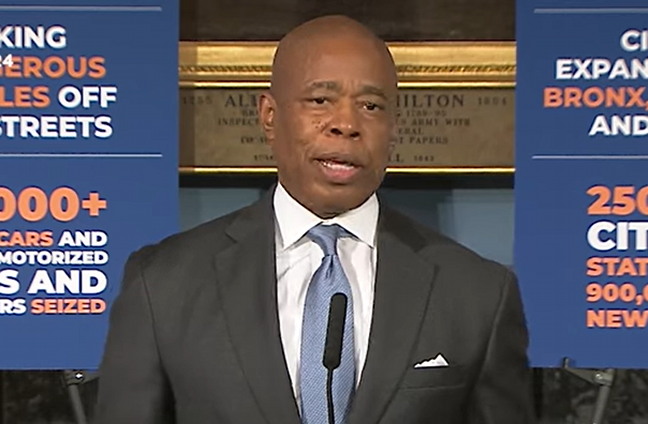On a recent Monday afternoon press conference, New York City Mayor Eric Adams found himself at the center of attention, particularly regarding a controversial statement made by former President Donald Trump. Trump indicated that he might consider pardoning Adams, a comment that prompted a barrage of questions from the media. However, the press conference took an unexpected turn when the conversation shifted towards the tragic case of Brian Thompson, the CEO of UnitedHealthcare, who had been murdered three weeks prior. The suspected killer, Luigi Mangione, sparked discussions about radicalization, gun violence, and the moral state of today’s youth.
Mayor Adams’ response to the topic of Mangione surprised many, especially liberal journalists present at the event. He unequivocally condemned Mangione’s actions, stating that the suspect had been “radicalized” to hate America. This assertion marked a stark divergence from the narrative often conveyed by those on the left, who typically emphasize systemic issues rather than individual moral failings. Adams suggested a need to confront the growing trend of young individuals being radicalized against their own country, pointing to a broader cultural malaise within America’s youth.
Adams elaborated on his statements, emphasizing that “our children are being radicalized to hate America”—a claim that resonated with the reality of a disaffected and angry youth. He pointed out that the shooter came from an affluent background, attended Ivy League schools, yet still succumbed to feelings of disdain and hatred. This paradox troubled Adams, who articulated the importance of addressing the underlying factors contributing to such radicalization rather than merely focusing on socioeconomic status. He likened the situation to a sports team, remarking, “I’m seeing our bench is hating the team,” which serves as a metaphor for the broader cultural and national identity crisis he perceives within the youth.
Adams’ remarks represent a shift from the traditionally held progressive views on crime and violence, pushing back against the liberal narratives that often suggest economic inequality or systemic issues as the root causes of radical behavior. His comments reflect a growing sentiment among some leaders that the conversation about radicalization and violence needs to encompass not only external factors but also the personal failings and ideologies that can lead individuals to violent outcomes. This perspective could hint at a deeper ideological realignment for Adams as he increasingly addresses issues from a more conservative standpoint.
Moreover, the mayor’s recent engagements—including a conversation with Trump’s ‘border czar,’ Tom Homan—indicate that he is willing to explore cooperation and dialogue with figures traditionally seen as political adversaries. Such efforts may reflect Adams’ attempts to embrace a broader range of viewpoints in tackling complex issues like crime and public safety, positioning him as a centrist figure in an often polarized political landscape.
As a leader grappling with the complexities of urban governance and societal challenges, Adams seems to be carving out a unique political identity. While he has built a reputation as a Democrat in one of the country’s most liberal cities, his recent actions and statements suggest a potential pivot towards a tougher stance on crime and radicalization. Whether this shift translates to broader political implications remains to be seen, but it certainly sets the stage for an increasingly charged discourse around these critical issues as the city—and perhaps the nation—navigates the complexities of modern governance and social cohesion.

